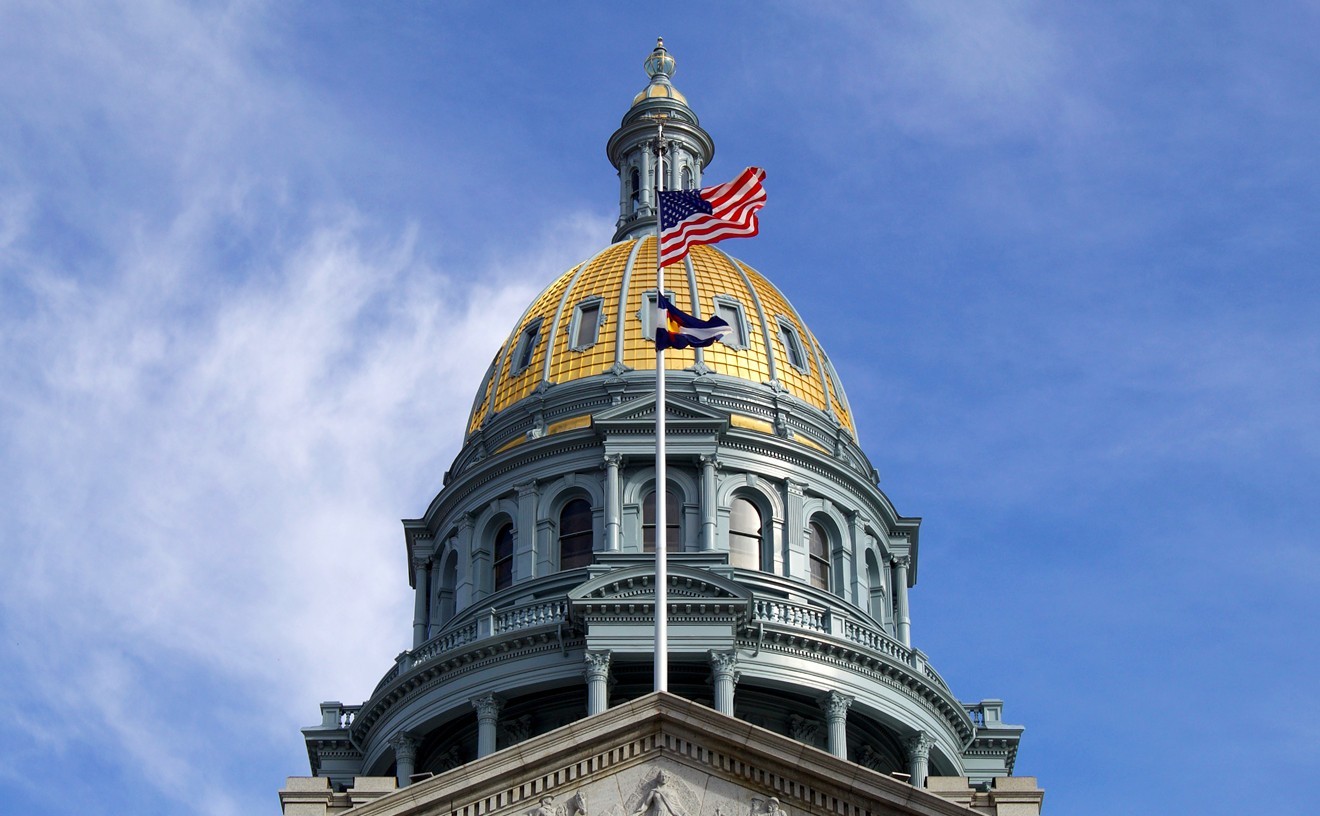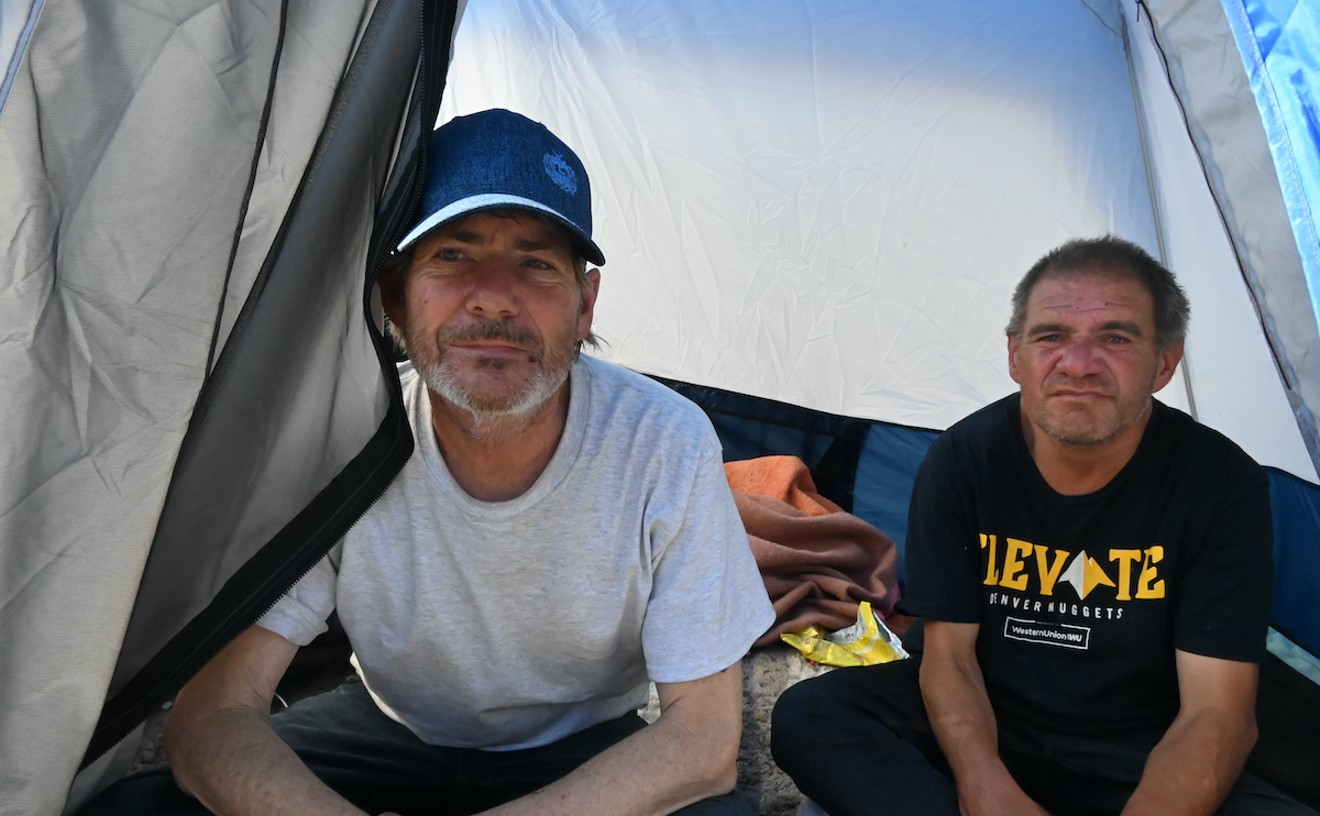The City of Denver is about to take the plunge at its Winter Park ski resort, pledging city resources to a high-stakes real estate deal at the base of the ski runs. But finding out just how that deal will work--and exactly what risks taxpayers may be asked to take on--is like trying to find a ski pole at the bottom of an avalanche.
The Winter Park resort, owned by the city since its inception in 1939, is posting annual profits nearly double the 1993 average for ski areas in the central Rockies. The nonprofit board that runs it for Denver, the Winter Park Recreational Association, has spent nearly $1 million over a ten-year period planning and designing a ritzy European "village" at the base area, complete with upscale hotels, condominiums and retail shops.
But neither city officials nor the WPRA's $218,000-per-year president, Gerald F. Groswold, whose father belonged to an exclusive alpine country club that pioneered skiing at Winter Park, want to share financial details of that proposed mountain playground for the well-off with the resort's owners: the people of Denver.
In fact, city officials don't seem to want to know exactly what's going on at their own resort--even though they're now engaged in an effort to give the WPRA ninety acres of city land for development. "One of the premises of all this is there's no reason to think the city is expert in managing a ski area," says Andrew Wallach, an aide to Mayor Wellington Webb who has shepherded the city's dealings with the WPRA. "So we give them a fair amount of slack as long as they produce the financial results we want. Our assumption is that what's good for them is good for us."
The city views the WPRA so charitably, in fact, that in 1993, Mayor Wellington Webb and City Attorney Dan Muse cut a secret deal that would have allowed the WPRA to buy the resort for as little as $29 million--$26 million less than the resort's own appraisers said it was worth and $39 million less than its estimated value with the base development. That plan to take the ski area private was shot down after city officials revealed it to the city council just days before a required vote.
Before the aborted insider sale, Denver received only about $7,000 per year from the resort, which in the past decade has posted average annual profits in the millions. Last year city officials negotiated a new agreement that, while calling for increased annual payments to the city, also contains a veritable road map of escape routes for the WPRA. It also locks the city into a 3 percent return on its asset--roughly what the city could get in a basic savings account.
After months of huddling privately with WPRA officials, however, the Webb administration has become a true believer, giving its stamp of approval to Groswold's longtime desire to expand the resort and compete more aggressively with Colorado's privately owned ski areas. The WPRA, though, has always been reluctant to release information about its financial dealings. And it remains tight-lipped, even as it prepares to lead the city into a multimillion-dollar deal that will almost certainly include a profit-sharing arrangement for the benefit of a private development company.
The resort, for instance, recently sent City Auditor Don Mares a copy of its 1995 financial statements--along with a letter instructing Mares that the information was "not for publication or general distribution." (Mares released the documents to Westword anyway.) It continues to refuse to allow members of the public to attend its monthly meetings, arguing that it is not bound by the Colorado Open Meeting Law. It says it has made no decisions about how to structure a deal, even though the base-area development is expected to be largely completed in just five years. And a recently released "economic study" and appraisal of the resort, paid for by Denver taxpayers, was held up for a full eight months so the WPRA could delete profit projections and other information relating to base-area development.
"I see no reason for it," says parks advisory-board member Tony Trampler of the decision to allow the resort to "redact" the $40,000 study. "To me, it's a public document. The WPRA is acting as an agency for the city, not as a private stockholder corporation."
Trampler argues that because the city apparently intends to form a partnership with a private developer--meaning it will assume risk in the project--citizens have a more pressing need for information on Winter Park than they have even at Denver International Airport, where the financial burden is assumed primarily by private bondholders. "The citizens of Denver are the owners," says Trampler, "and if they are the stockholders, they certainly have a right to know what's going on."
Winter Park, however, is a corporate aberration in Colorado: an agent of the city that pays no property or income tax yet has traditionally operated under a cloak of secrecy more common to closely held private concerns. And it's poised to become even more of an anomaly. Last year the nonprofit WPRA incorporated two for-profit subsidiaries: companies that exist solely to develop 71 acres of prime real estate at the base.
The city's entry into the real estate business rankles Medill Barnes, who served last year on a citizens' advisory committee appointed by Webb to mull the future of Winter Park. "Developing a ski base area is by definition a very speculative undertaking," says Barnes. "Base-area developments have gone kerflop all over the state. Should the city be involved in that? I felt no."
However, the WPRA has a way of getting what it wants where the city is concerned. An exclusive organization historically controlled by Denver's wealthy elite, it also has numerous links to the Colorado Arlberg Club, an ultra-secret private club that leases about fifty acres of prime land to the WPRA--and which for years now has shared both membership rosters and dreams of development with the resort board.
And this isn't the first time the WPRA has flirted financially with the private sector. Back in the wide-open Eighties, the resort board allowed a pair of high-flying Oklahoma developers to build a hotel on the same parcel of city land now slated for development. After the developers' vision of a huge three-wing resort was dashed by money troubles, a consortium of savings-and-loans that had made the loan on the project briefly wound up in control of thirty acres of city land. The potentially embarrassing role played by institutions like Denver's Silverado Banking in the Vintage Hotel was kept out of the public eye--in large part because nobody bothered to look.
The latest stab at Winter Park land development, however, already bears the city's formal blessing. That green light came in the form of the May 1994 agreement signed after public pressure forced Webb to back off his plans to sell the resort to the WPRA outright. The 1994 compromise agreement was heralded by the city as a triumph of diplomacy that brings roughly $2 million per year into city coffers. But it also virtually guarantees that the people of Denver will become silent partners in a speculative land deal that could make others much richer.
And silent is the operative word.
The labyrinthine relationships that have governed development at Winter Park go back more than half a century. And despite a flurry of public attention in the last few years, they remain as cozy as ever.
The City of Denver originally obtained ninety acres of land in the area in 1939, via a land exchange with the federal government. The stated goal of then-parks manager George E. Cranmer was to use the land, along with other parcels leased from the feds, to provide the general public with mountain recreation close to Denver. The swap, however, had an additional benefit: supplementing the extracurricular activities of the Colorado Arlberg Club, the tony private ski group that by then had built its own lodge and tow rope on the mountain.
Cranmer, a Denver Country Club member whose many accomplishments included having a city park built across the street from his house, was an Arlberg Club member himself, as were Adolph Coors Jr., Henry C. Van Schaack and other leading socialites of the day. Formed in 1929 to "encourage desirable persons to take up skiing," the Arlberg Club had already purchased 160 acres of land on the mountain by the time the city got into the act.
While other Denver residents suffered through the Great Depression, the hale Arlbergers made headlines in the society column of the Denver Post with their ski contests and construction of a private clubhouse at the west portal of the brand-new Moffat Tunnel. And they displayed a knack for getting the public to subsidize development in the vicinity of their playground.
In 1939, for instance, when skiing was still almost solely a sport for the well-to-do, the federal Works Progress Administration, set up to provide work for unemployed laborers, spent $33,000 for a new ski slide at the area still known as West Portal. That same year, the city entered into a license with the Moffat Tunnel Commission to use about nine acres of state land for the Winter Park base area free of charge. After the ski area opened for business, Denver taxpayers also chipped in maintenance costs for what in many respects remained a private Arlberg venture. By 1950, says Medill Barnes, then-mayor Quigg Newton decided it wasn't proper for the city to support the recreational habits of the wealthy and set about creating the WPRA "as a kind of public buffer" between Denver and the Arlbergers.
Newton, who was an Arlberg member himself, doesn't remember it that way. The ex-mayor says he and Denver millionaire Allan Phipps (another Arlberger who had helped run the resort even while it was under the city's direct control) handed over management to the WPRA simply because the city had other priorities. "The city at that time was strapped for funds," Newton says. "I don't think there was any effort on anybody's part to isolate the Arlberg Club. The club has always been, especially in the early days, a big factor in the use of those facilities."
Phipps served as the first chairman of the WPRA, and several other Arlbergers were appointed to the first board of trustees. Phipps's bank, the First National Bank of Denver (now First Interstate) emerged as the resort's chief lender. And over the years, the club and the WPRA have continued to enjoy an openly incestuous relationship. Current boardmembers W. Scott Moore, Tim McKeever and James Norling belong, while WPRA chairman Kermit L. Darkey of the Mountain States Employers' Council joined in 1973--and then quietly resigned in 1993, shortly before the board began negotiating a possible sale with Denver.
The father of current WPRA president Gerald F. Groswold also was a member. And the WPRA's weblike ties to the Arlberg Club still worry some observers. Longtime Denver City Councilwoman Cathy Donohue, now the director of the city's Office of Regulatory Reform, said publicly last year that she was convinced the WPRA would have flipped Winter Park directly to the Arlbergers had it been successful in closing its bargain-basement deal with Denver. Donohue today says she believes the club may still be angling for a piece of the action at Winter Park.
The Arlberg Club, however, doesn't like to talk about its land dealings at Winter Park--or anything else. Reached at his downtown law offices, club president Bruce B. Bee refers all questions to the WPRA, refusing even to confirm whether his club is a nonprofit corporation. The club is, and as such is required to file its income-tax statements with the Colorado Attorney General's office. The latest statement available, from 1993, shows that the club earned just over $64,000 that year running its private ski resort. Its biggest chunk of outside income: a $74,500 payment from the WPRA, which twenty years ago leased several parcels of land from the club to build its Mary Jane ski run.
Over the years, the Arlbergers have harbored their own visions of development at the ski area. In 1980 the club and the WPRA signed a 21-page amended lease agreement that, among other things, stated their mutual interest in base-area development. The plan the Arlbergers were most interested in at the time was one of their own: a project to build apartments, townhouses or condominiums on one of their holdings--upscale lodgings that would come complete with quarters for "servants or occasional guests."
As part of the amended lease agreement, the WPRA promised to pay for the construction of utility feeder lines and an access road to what the club called its "future facilities site," even agreeing to plow the road in the winter. It also agreed to do its best to keep members of the general public away from the club's private turf. In return, the club agreed to return to the WPRA $1,000 for each townhome, condo or other residential unit it built.
Along with many other real estate dreams of the 1980s, though, the club's hoped-for land boom failed to materialize. The club did later sell some of its other property to a private developer who built expensive condominiums, a project Medill Barnes describes as "a dismal failure. They thought they would break into the $300,000 condo market, and it just was a bomb."
Unlike Donohue, Barnes says he isn't convinced that the Arlberg Club stands to make a killing on today's planned base-area expansion. Most of the members put a higher value on their privacy than on growth, he says. But new development will certainly enhance the value of the club holdings in the area, he notes. And coupled with the WPRA's experience with the ill-fated Vintage Hotel, he says, the frustrated condo scheme on the former Arlberg land makes one thing clear: The old real estate saw that "you can't get hurt in dirt" doesn't always apply in the mountains.
"Needless to say, I point to those two wonderful endeavors as good warning signals that maybe the city ought to think twice about squandering its asset," says Barnes.
end of part 1










